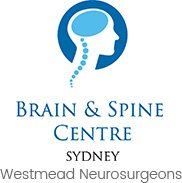Nervous System
Brachial Plexus Injury
The brachial plexus is a bundle of nerves that originate at the spinal cord near the neck. These nerves innervate your shoulder, elbow, hand and wrist providing feeling and movement.
Any form of trauma that pushes your head away from your shoulder can stretch or tear these nerves. An injury to the brachial plexus may stop signals to and from the brain and even paralyse the affected arm.
Carpal Tunnel Syndrome
Carpal Tunnel Syndrome is a common, painful, progressive condition that is caused by compression of the median nerve at the wrist area.
Common symptoms of carpal tunnel syndrome include numbness and tingling sensation in all the fingers except little finger.
Cavernous Angioma
Cavernous angioma is a vascular disorder characterised by the formation of a cluster of low pressure capillaries that form caverns (cave-like structures) in the brain or spinal cord. Cavernous angioma may be present at birth or can form later during your life. They may be inherent or caused from high pressure in your brain over a long period of time as a result of blockages or inefficient venous drainage.
Central Pain Syndrome
Central pain syndrome is a neurological condition where you experience pain in a particular part of your body, but is not related to any injury to that part. It occurs as a result of damage to your brain, brainstem or spinal cord, brought about by trauma, stroke, seizures, infection or a tumour. The syndrome can show immediately, or after months or even years.
Chorea
Chorea is neurological disorder characterized by involuntary movements of the body, which may sometimes appear like dance movements. They are irregular and do not follow any pattern and may move from one part of the body to another, usually involving the extremities and face. The involuntary movements may involve facial grimacing, grunting noises, tongue movement and jerking, seen even during rest.
Essential Tremor
A tremor is an involuntary muscle movement characterized by shaking of a body part. A slight tremor is normally present in all of us, especially the elderly. Tremors due to a neurological disease that do not resolve require medical intervention. Essential tremor is a neurological condition which causes rhythmic shaking of a part of the body, especially the hands, when performing simple tasks such as writing or drinking from a glass.
Hemifacial Spasm
Hemifacial spasm is a condition characterized by uncontrolled twitching of muscles on one side of the face caused by compression or irritation of the facial nerve. The affected facial nerve then sends abnormal signals to the muscles it supplies causing them to twitch or contract.
Neurofibromatosis
Neurofibromatosis is a genetic condition that is characterized by the formation of benign (noncancerous) tumours along nerve tissue.
The noncancerous tumours can develop anywhere along your nervous system including the brain, spinal cord, and nerves.
Peripheral Neuropathy
Peripheral neuropathy is a condition characterized by damaged nerves that cause pain. When this condition affects one nerve, it is called mononeuropathy; when several nerves are affected, it is polyneuropathy; and when 2 or more nerves are involved in different areas, it is termed as multiple mononeuropathy.
Spinal Cord Injury
The spinal cord is a bundle of nerves that extends from the base of your brain down to your lower back. These nerves are responsible for the conduction of signals from your brain to the rest of your body to help in its various functions. It is protected by a bony canal formed by vertebrae arranged one above the other as any injury to these nerves can disrupt normal functions.
Spinal Cord Tumours
The spinal cord stretches from the base of your brain, through the backbone, to your lower back. A spinal cord tumour is an uncontrolled growth of tissue that develops within the spinal cord or surrounding bones, and can be cancerous (malignant), spreading to other parts of the body or noncancerous (benign), remaining as a stationary lump.
Trigeminal Neuralgia
Facial pain can occur due to an injury or infection of any facial structure such as the eyes, nose, sinuses, teeth and jaw. It may also be experienced when you have a disorder called trigeminal neuralgia (TN), which affects the trigeminal nerve that carries facial sensations such as pain, pressure and temperature to the brain.
Chronic Pain
Coming soon
Peripheral Nerve Disease
Coming soon
Tic Douloureux
Coming soon




